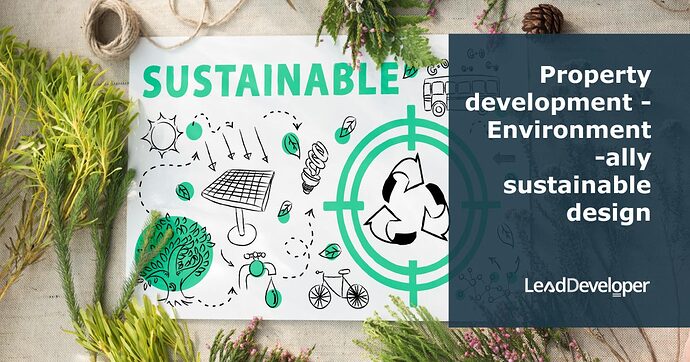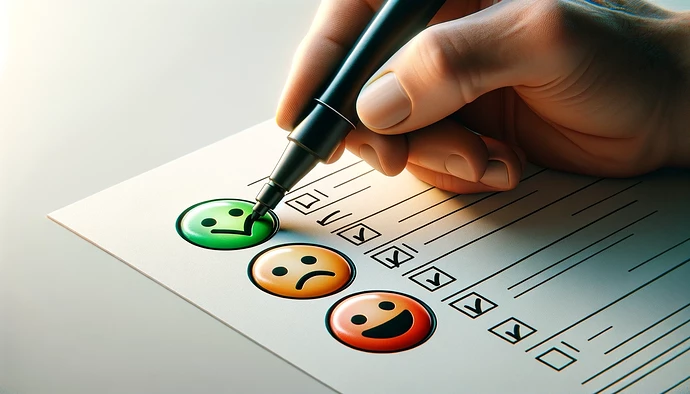Environmentally Sustainable Design
Here are the key principles and strategies for integrating environmentally sustainable design into property development. Key points include:
Importance
Understanding sustainable design is crucial for developers to create efficient and cost-effective projects that also increase the perceived value of the development.
Design Principles
Focuses on optimizing natural sunlight exposure through site orientation, minimizing east and west facing walls, and incorporating features like wider eaves, awnings for shading, and treated glazing to improve energy efficiency.
Insulation and Ventilation
Stresses the importance of increased insulation in the roof and walls, natural ventilation, and the use of light-colored materials to reflect heat.
Energy Efficiency
Recommends using energy-efficient lighting like LEDs, considering the internal layout for improved energy efficiency, and selecting high-performance glazing products to reduce energy consumption.
Regulatory Standards
Discusses balancing the economics of development with environmental standards, such as Victoria’s six-star energy rating, to meet minimum requirements without unnecessary expenditure.
Insights based on numbers:
- Achieving up to one star rating improvement through solar energy optimization.
- The significance of adopting a six-star energy rating in Victoria as the baseline for regulatory compliance, indicating the emphasis on energy efficiency in construction standards.
Frequently Asked Questions
What are the benefits of utilising natural sunlight in property
Energy Efficiency
By positioning living spaces to make the most of northern sunlight, developers can significantly reduce the need for artificial lighting and heating, leading to lower energy consumption and costs.
Increased Property Value
Utilizing natural sunlight not only saves money in the long run but also enhances the perceived value of the property. This aspect is vital for developers aiming to establish themselves as knowledgeable and responsible in the field of sustainable development.
Improved Living Conditions
Designing developments to capture optimal sunlight ensures that living areas are brighter and more comfortable, enhancing the well-being of the occupants.
Regulatory Compliance
The video mentions achieving up to a one-star rating improvement through careful site orientation and design, indicating that such practices can help meet or exceed energy efficiency standards set by regulatory bodies.
How do insulation and ventilation contribute to environmentally sustainable design?
Insulation Enhancements
Increased insulation in the roof and walls significantly reduces energy loss, helping to maintain the interior temperature. This makes the building more energy-efficient by lessening the need for heating in winter and cooling in summer.
Natural Ventilation
Designing properties to encourage natural ventilation through windows and doorways can significantly reduce reliance on artificial cooling systems. This not only saves energy but also improves air quality inside the building.
Energy Efficiency
Proper insulation and ventilation are integral to the design’s overall energy efficiency. They contribute to a building’s ability to meet or surpass energy efficiency standards, such as the mentioned six-star energy rating in Victoria.
What role do regulatory standards play in shaping environmentally sustainable development?
Baseline Requirements
Regulatory standards, such as the six-star energy rating mentioned for Victoria, establish minimum requirements for energy efficiency in new developments. These standards ensure that all new constructions adhere to a certain level of environmental sustainability.
Economic Considerations
Developers must balance the costs of implementing sustainable design features with the regulatory requirements. While some may opt for the minimum standards to save on initial costs, it is suggested to consider long-term benefits and the potential for higher standards to enhance property value and efficiency.
Incentive for Innovation
Regulatory standards can encourage developers and architects to innovate in sustainable design, pushing beyond the minimum requirements to achieve greater energy efficiency, reduce environmental impact, and improve occupant comfort.
Positioning and Branding
The compliance with, or exceeding of, regulatory standards can also play a significant role in how a development company positions itself in the market. It can be a part of the company’s branding as environmentally conscious and responsible, appealing to a growing segment of eco-aware consumers and investors.
What is environmentally sustainable design in property development?
Environmentally sustainable design refers to the practice of incorporating eco-friendly principles and strategies into property development. The aim is to create buildings that are efficient, cost-effective, and have a high perceived value, by minimizing their environmental impact through energy savings, resource efficiency, and better integration with the natural surroundings.
Why is sustainable design important for developers?
Sustainable design is important for developers because it enables the creation of projects that are not only more efficient and cost-effective but also add to the perceived value of the development. This approach can lead to savings on energy costs, a reduction in carbon footprint, and an enhanced reputation for environmental stewardship.
How can energy efficiency be achieved in sustainable property development?
Energy efficiency can be achieved through several strategies, including the use of energy-efficient lighting like LEDs, designing the internal layout to optimize energy use, and selecting high-performance glazing products that minimize heat loss in winter and heat gain in summer. These measures contribute to lower energy consumption and reduced greenhouse gas emissions.
What are the regulatory standards related to sustainable design?
Regulatory standards, such as Victoria’s six-star energy rating, set minimum requirements for energy efficiency in buildings. Developers need to balance the cost of meeting these standards with the environmental benefits. Compliance with such standards ensures that buildings meet a baseline for energy efficiency, which is increasingly becoming a significant factor in the construction industry.
How significant is achieving a one-star rating improvement through solar energy optimization?
Achieving up to a one-star rating improvement through solar energy optimization is significant as it represents a measurable enhancement in a building’s energy efficiency and sustainability profile. Solar energy optimization can reduce dependency on non-renewable energy sources, lower energy costs, and contribute to a lower carbon footprint.
Test Your Knowledge
1. Why is it crucial for developers to integrate environmentally sustainable design into their projects?
A. To comply with international construction codes.
B. To increase the complexity of the project.
C. To create efficient and cost-effective projects that also increase the perceived value of the development.
D. To reduce the time needed for construction.
2. What design principle is focused on to optimize natural sunlight exposure in property development?
A. Maximizing south and north facing walls.
B. Minimizing east and west facing walls and incorporating features like wider eaves for shading.
C. Using dark-colored materials to absorb heat.
D. Placing windows only on the north side of the building.
3. How does increased insulation contribute to environmentally sustainable design?
A. By increasing the building’s energy consumption in winter.
B. By reducing the need for artificial heating and cooling, thus saving energy.
C. By making the building darker and cooler only.
D. Insulation has no significant effect on sustainability.
4. Which strategy is NOT mentioned as a way to achieve energy efficiency in sustainable property development?
A. Using energy-efficient LED lighting.
B. Selecting high-performance glazing products.
C. Increasing the internal layout’s complexity.
D. Considering the internal layout for improved energy efficiency.
5. What is the significance of Victoria’s six-star energy rating in the context of regulatory standards for sustainable design?
A. It is a suggestion that developers can choose to follow or ignore.
B. It sets a minimum requirement for energy efficiency in buildings.
C. It is the highest achievable energy rating in the world.
D. It applies only to residential developments, not commercial projects.
6. How can achieving up to a one-star rating improvement through solar energy optimization impact a development?
A. It represents a significant increase in construction costs.
B. It decreases the overall value of the development.
C. It is a measurable enhancement in the building’s energy efficiency and sustainability profile.
D. It has no real impact on the building’s performance or value.
7. What is NOT a benefit of utilizing natural sunlight in property development?
A. Reducing the need for artificial lighting and heating.
B. Lowering the building’s aesthetic appeal.
C. Enhancing the perceived value of the property.
D. Improving living conditions by ensuring living areas are brighter and more comfortable.
8. How do regulatory standards like the six-star energy rating influence environmentally sustainable development?
A. By discouraging innovation in sustainable design.
B. By establishing minimum requirements for energy efficiency.
C. By significantly increasing the project’s design phase duration.
D. By mandating the use of specific construction materials.
Answers:
- C
- B
- B
- C
- B
- C
- B
- B
Assignment
Environmentally Sustainable Design: Practical Exercise
Objective
To apply the principles of environmentally sustainable design in a hypothetical property development project. This exercise will test your understanding of design principles, energy efficiency strategies, and regulatory standards discussed in the material.
Part 1: Design Principles and Site Orientation
To Do:
- Choose a Site: Select a hypothetical location for your development project. Describe the site’s orientation and geographical features.
- Design Layout: Based on the chosen site, sketch a preliminary layout that maximizes natural sunlight exposure. Explain your choices regarding the orientation of the building, placement of windows, and any additional architectural features designed to optimize sunlight.
Research Question:
- How does the orientation of a building affect its energy consumption, and what are the optimal orientations for reducing energy use?
Part 2: Insulation and Ventilation
To Do:
- Insulation Plan: Describe how you would increase insulation in the roof and walls of your development. Specify the types of materials you would use and explain why.
- Ventilation Strategy: Outline a strategy for incorporating natural ventilation into your design. Detail how windows, doors, and other openings will facilitate airflow and improve indoor air quality.
Research Question:
- Investigate the benefits of light-colored materials in reflecting heat. Provide examples of materials that could be used in your design.
Part 3: Energy Efficiency
To Do:
- Lighting Plan: Create a lighting plan that utilizes energy-efficient technologies like LEDs. Explain where and how these lighting solutions will be implemented.
- Energy-Efficient Features: List other energy-efficient features or technologies you plan to incorporate into your development, such as high-performance glazing or solar panels. Describe their expected impact on the building’s energy consumption.
Research Question:
- Explore the advances in energy-efficient glazing products. How do they contribute to reducing energy consumption in buildings?
Part 4: Regulatory Standards and Sustainability Goals
To Do:
- Compliance Strategy: Identify the energy efficiency standards (e.g., Victoria’s six-star energy rating) applicable to your development. Describe the steps you will take to ensure compliance or exceed these standards.
- Sustainability Goals: Set specific sustainability goals for your project beyond regulatory compliance. These could include water conservation, reducing construction waste, or integrating green spaces.
Research Question:
- What are the long-term economic and environmental benefits of exceeding the minimum regulatory standards for energy efficiency in property development?
Deliverables:
- A written report including answers to the “To Do” tasks and research questions.
- Sketches or diagrams supporting your design choices and strategies for energy efficiency.
- A presentation summarizing your sustainable design approach, key features, and how it addresses the principles outlined in the provided material.



